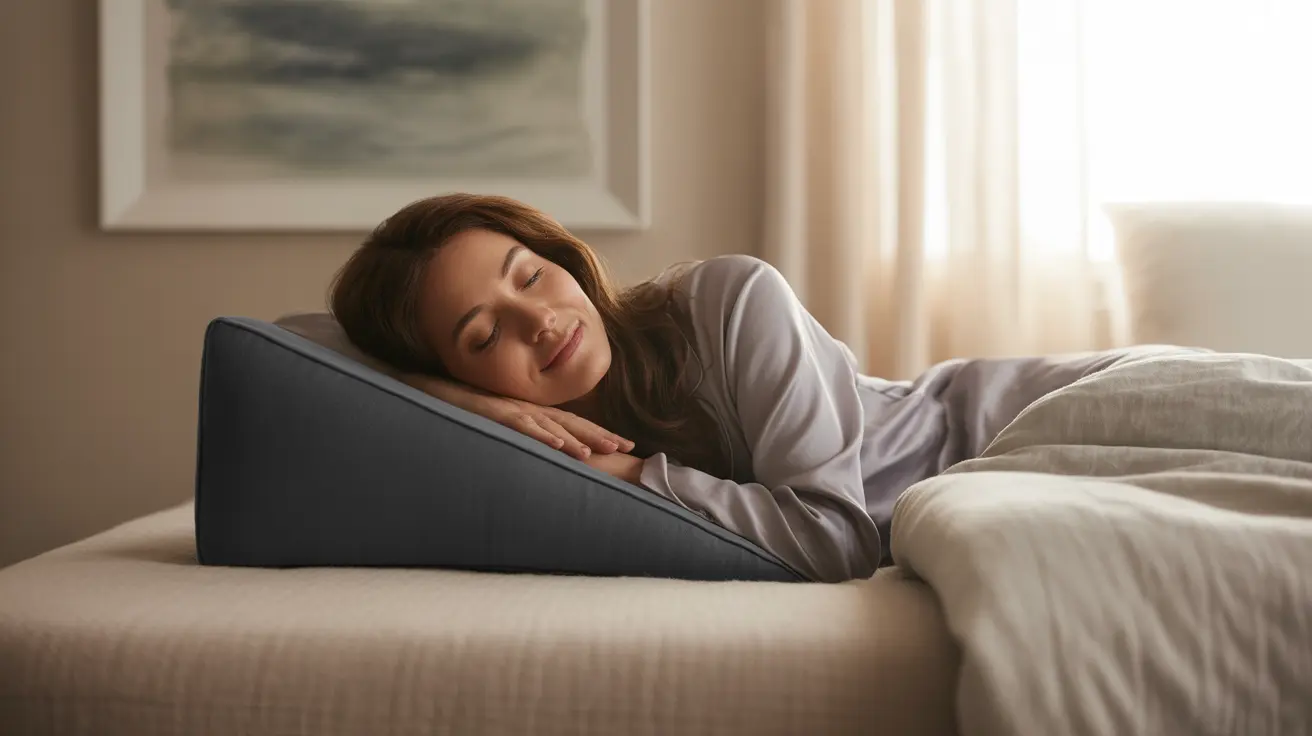Living with gastroesophageal reflux disease (GERD) can make getting a good night's sleep challenging. One effective solution that many people turn to is using a wedge pillow, which can significantly reduce nighttime acid reflux symptoms and improve sleep quality.
In this comprehensive guide, we'll explore how wedge pillows work to manage GERD symptoms, their proper use, and what you need to know to get the most benefit from this helpful sleep aid.
How Wedge Pillows Work for GERD Management
Wedge pillows help manage GERD symptoms by using gravity to your advantage. When you lie flat, stomach acid can more easily flow back into your esophagus. By elevating your upper body, a wedge pillow helps keep stomach contents where they belong, reducing the likelihood of acid reflux during sleep.
The Science Behind Elevation
The gradual incline of a wedge pillow creates an optimal sleeping position that helps maintain the natural curve of your spine while keeping your head and chest elevated. This position makes it more difficult for stomach acid to travel upward against gravity, providing natural relief from GERD symptoms.
Choosing the Right Wedge Pillow
When selecting a wedge pillow for GERD, several factors deserve careful consideration:
- Height and angle (typically between 6-12 inches)
- Material quality and density
- Size and width for comfort
- Cover material and washability
- Durability and construction
Optimal Angle for GERD Relief
Most medical experts recommend an incline between 30-45 degrees for optimal GERD symptom relief. This elevation has been shown to be most effective at preventing nighttime reflux while remaining comfortable enough for sleep.
Proper Usage and Sleeping Positions
While back sleeping is often recommended when using a wedge pillow, it's not the only option. The key is to maintain the elevation of your upper body while finding a position that allows for comfortable sleep.
Tips for Side Sleepers
Side sleepers can absolutely benefit from wedge pillows. Position the pillow so your entire torso is elevated, and consider using an additional small pillow between your knees for proper spine alignment.
Maintenance and Replacement
To ensure your wedge pillow continues to provide effective GERD relief, proper maintenance is essential. Regular cleaning and periodic replacement will help maintain its shape and supportive properties.
Frequently Asked Questions
How does a wedge pillow help reduce acid reflux symptoms in people with GERD? A wedge pillow elevates your upper body during sleep, using gravity to prevent stomach acid from flowing back into your esophagus. This elevated position helps maintain proper digestion and reduces nighttime reflux symptoms.
What is the best angle to elevate the upper body using a wedge pillow for GERD relief? The optimal angle for GERD relief is between 30-45 degrees. This elevation provides enough height to prevent acid reflux while remaining comfortable enough for sleep.
Can I use a wedge pillow if I sleep on my side or do I have to sleep on my back? Yes, you can use a wedge pillow while sleeping on your side. The key is maintaining the elevation of your upper body while finding a comfortable position that works for you.
How does a wedge pillow compare to a regular pillow for managing nighttime acid reflux? A wedge pillow provides consistent, gradual elevation that regular pillows cannot match. Unlike stacking regular pillows, wedge pillows maintain their shape and offer proper support throughout the night.
How often should I replace my wedge pillow to maintain its effectiveness for GERD? Most wedge pillows should be replaced every 1-2 years, depending on usage and material quality. Signs it's time for replacement include loss of shape, decreased support, or visible wear and tear.




